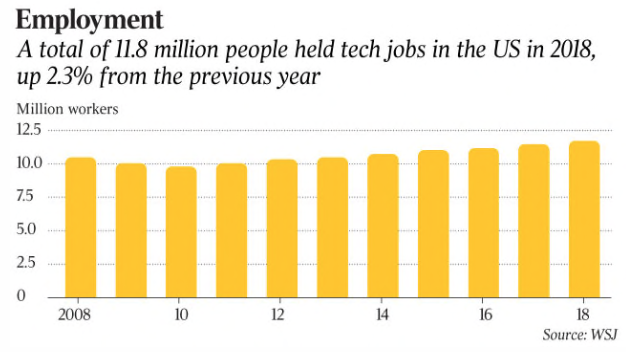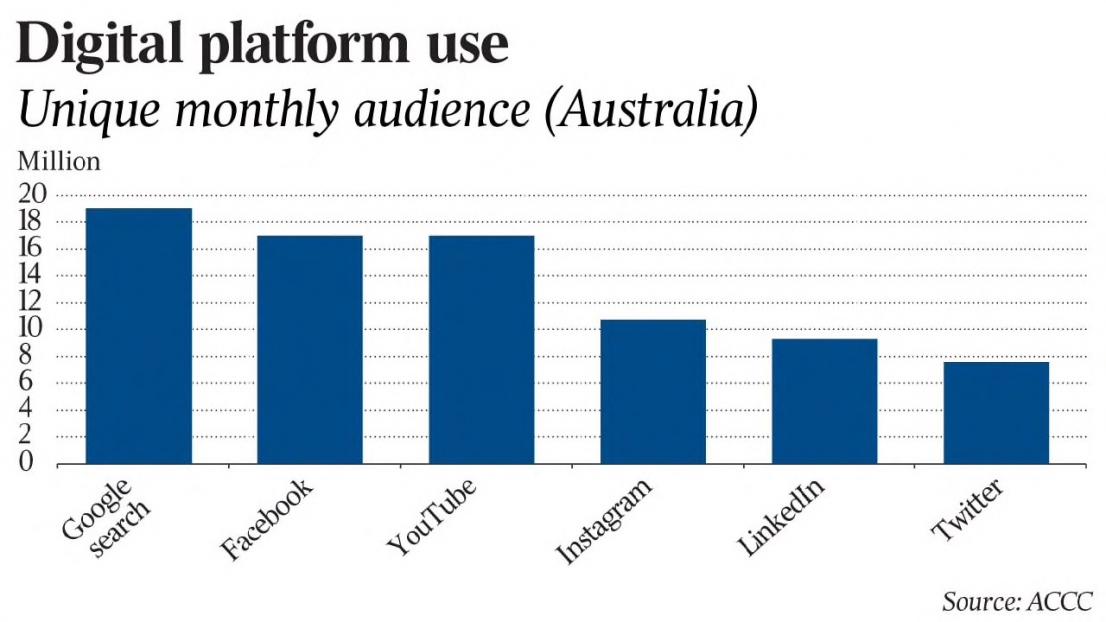
A total of 11.8 million people held tech jobs in 2018, up 2.3 per cent from the previous year, with gains led by software developers, systems analysts and cyber-security analysts, and IT support specialists, CompTIA said in a report Tuesday. Tech jobs accounted for 7.6 per cent of the US workforce last year, up from 7.2 per cent in 2017.
If the pace holds, the number of US tech professionals is set to grow 13.1 per cent over the decade between 2016 and 2026, creating 8.6 million new jobs, the report said. Over that period, the number of jobs for all occupations is projected to grow 10.7 per cent.
Tech workers are about evenly split, according to the report: 46 per cent work for technology companies, a category that includes Silicon Valley firms, while 54 per cent work in IT in other industries.
“We take it for granted that technology has an impact,” said Tim Herbert, CompTIA’s senior vice president of research. As an economic driver, he said, tech is shifting beyond Silicon Valley to businesses across the country.
Companies of all sizes were being transformed by technology in places like in Charlotte, North Carolina, or Boise, Idaho, he added: “When you really drill down into what’s happening in states that you don’t always think of as having a strong tech presence, it’s really something.”
As of the end of 2018, more than 100,000 workers in Charlotte had jobs in tech, either working for one of the city’s 4228 tech firms or as IT professionals at local businesses, accounting for 8.1 per cent of the city’s workforce, the report said.
Boise’s net tech employment hit 28,645 last year, up 4.1 per cent from 2017, representing 8.4 per cent of its workforce, the report said. In 2018, the city had just over 1000 tech firms. The results are based on an analysis of Labour Department data, as well as other government sources.
The tech sector generated an estimated $US1.8 trillion ($2.5 trillion) last year, up from $US1.6 trillion in 2017. Tech’s share of gross domestic product rose to 10.2 per cent in 2018 from 9.2 per cent in 2017, the report said. That makes tech the third biggest contributor to the economy, behind manufacturing and government services but ahead of the finance and insurance sectors, CompTIA said.
Part of the reason for tech’s employment growth beyond Silicon Valley was that the role of IT was shifting from backroom tech support to business strategies and revenue generation, said Craig Stephenson, senior partner and managing director of the North American technology officers practice at executive-search firm Korn/Ferry International.
“Companies are experiencing new challenges which may require a modernisation of functional capabilities,” Mr Stephenson said, adding that technology was quickly becoming critical for revenue growth, the time it took a product to reach the market, and customer experience.
Korn/Ferry last year found that 83 per cent of nearly 200 IT executives surveyed at firms across a range of industries described their role as being more strategic than it was three years ago.
That, in turn, is prompting companies to raise IT budgets. Gartner expects global spending on IT to reach $US3.8 trillion this year, up 3.2 per cent from 2018. Increased IT spending was driving job growth across the tech sector, said John-David Lovelock, a research vice president at Gartner.
“IT is no longer just a platform that enables organisations to run their business on. It has become the engine that grows the business,” Mr Lovelock said.
A downside of higher demand for tech workers is a yawning talent gap, CompTIA’s Mr Herbert said. More than 80 per cent of roughly 2800 tech-hiring decision makers at US firms, surveyed by Robert Half International this year, said finding tech talent was a challenge.










